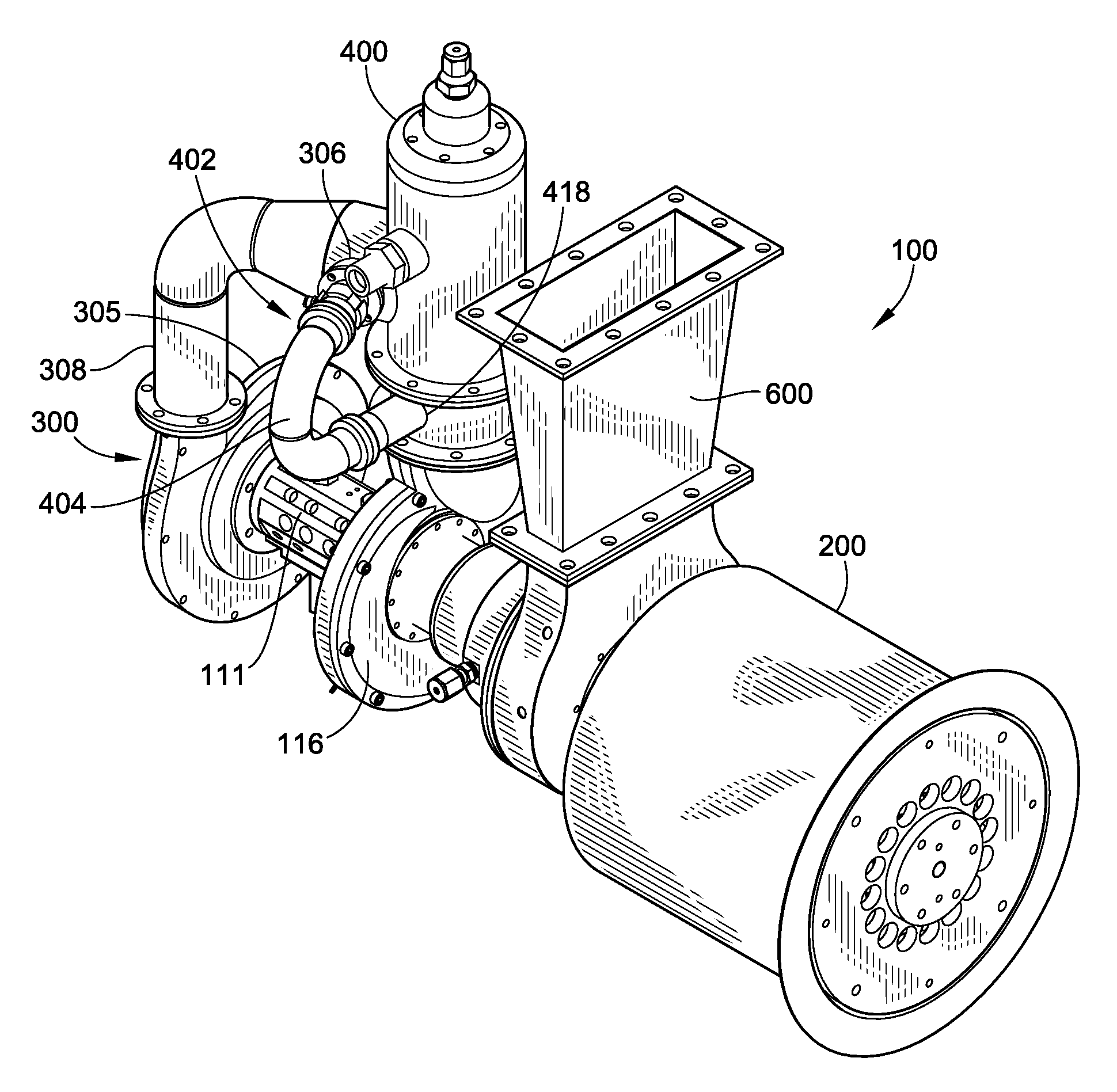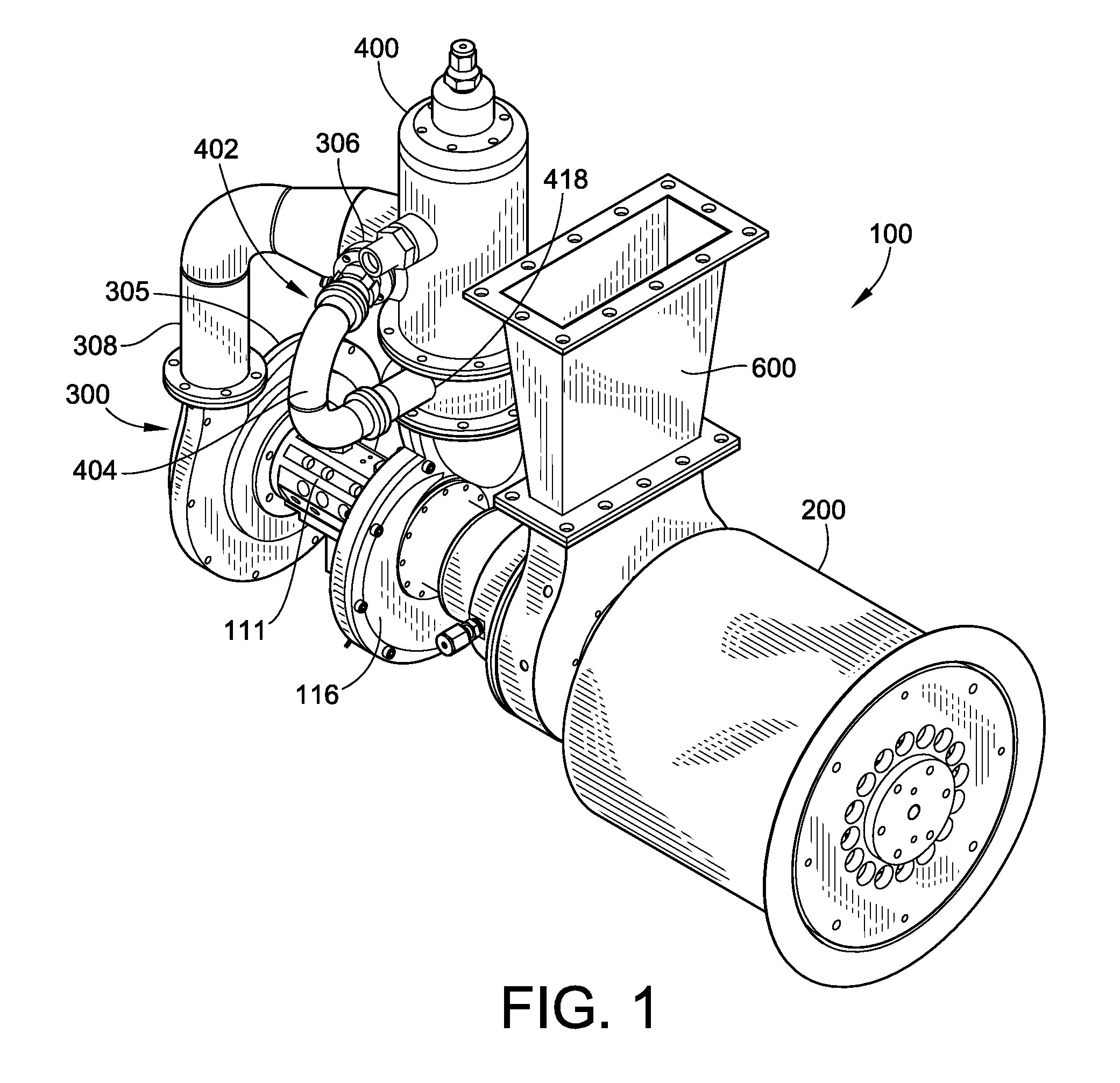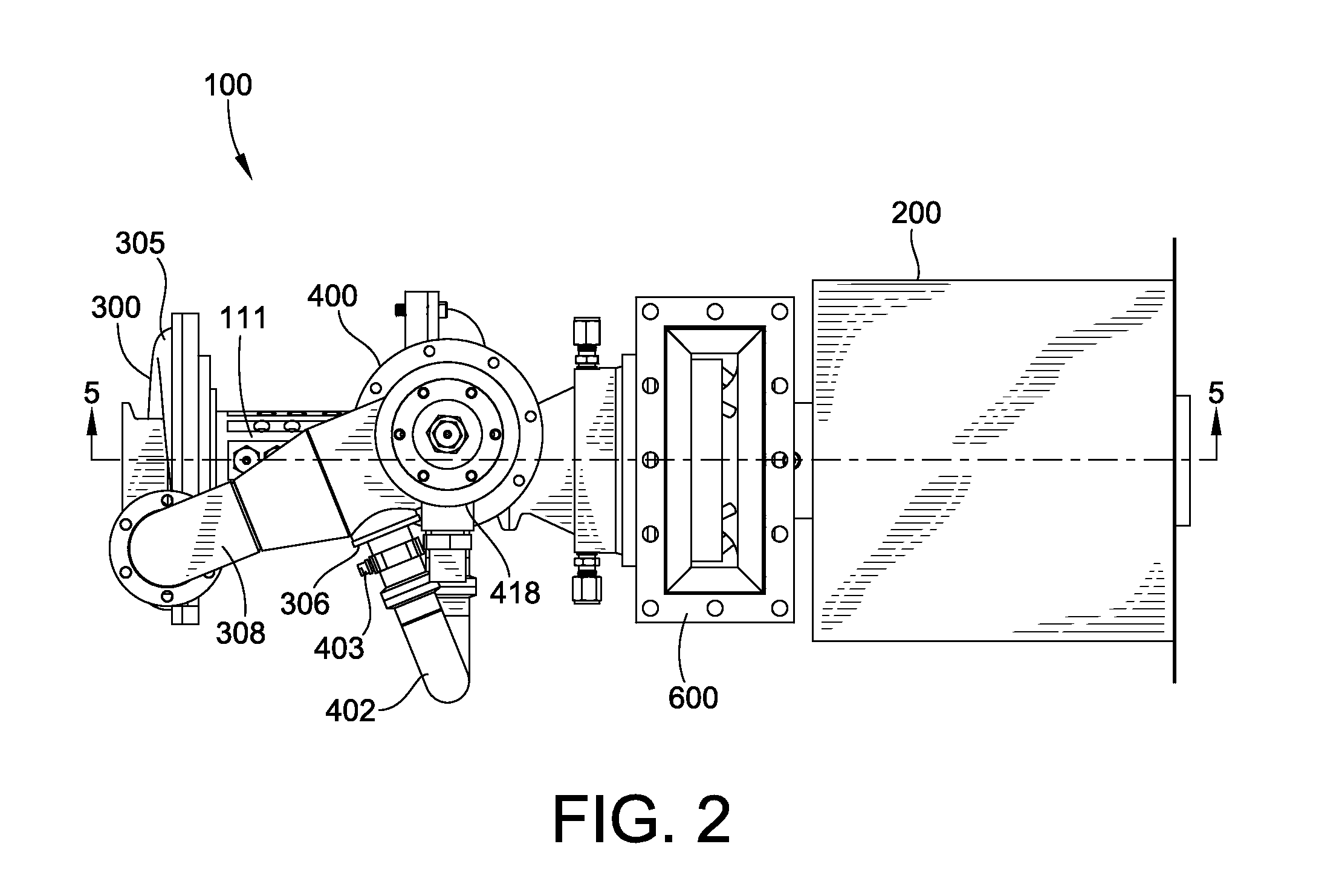Micro gas turbine engine for powering a generator
a gas turbine engine and micro-turbine technology, which is applied in the direction of machines/engines, turbine/propulsion fuel heating, lighting and heating apparatus, etc., can solve the problems of fuel coking, inability to permit adequate control of heat transfer into fuel, and large temperature variation, so as to reduce the required size of the prevaporizing combustor 400 and increase the maintenance requirements of the combustor
- Summary
- Abstract
- Description
- Claims
- Application Information
AI Technical Summary
Benefits of technology
Problems solved by technology
Method used
Image
Examples
Embodiment Construction
[0026]FIG. 1 is a perspective view illustrating the microturbine 100 in combination with a generator 200 of the present invention. The perspective view shows the following component parts of the micro gas turbine generator system:
[0027]As illustrated in FIGS. 1-5, the microturbine engine (or “microturbine 100”) of the present invention includes a single or multi-stage compressor 300, a prevaporizing combustor 400 for liquid and / or gaseous fuels, a single or multi-stage gas generator turbine 112, and a gas generator shaft 105 supported by a bearing system 110 housed within a bearing tunnel 111. The microturbine 100 further includes a single or multi-stage power turbine 109 and a power output shaft 206 supported by a bearing system 210, 212. Typically, the gas turbine 100 is integrated with an electric generator 200 and / or heat recovery or generator cooling system 500. The systems also generally include a housing 102 and power and control electronics known to the art.
The Centrifugal C...
PUM
 Login to View More
Login to View More Abstract
Description
Claims
Application Information
 Login to View More
Login to View More - R&D
- Intellectual Property
- Life Sciences
- Materials
- Tech Scout
- Unparalleled Data Quality
- Higher Quality Content
- 60% Fewer Hallucinations
Browse by: Latest US Patents, China's latest patents, Technical Efficacy Thesaurus, Application Domain, Technology Topic, Popular Technical Reports.
© 2025 PatSnap. All rights reserved.Legal|Privacy policy|Modern Slavery Act Transparency Statement|Sitemap|About US| Contact US: help@patsnap.com



